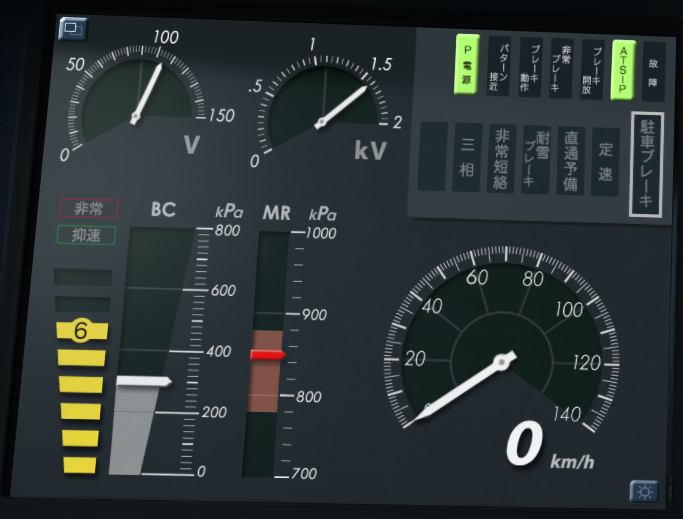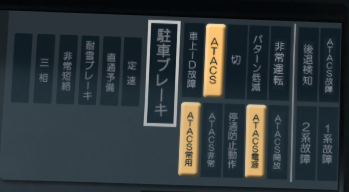Saikyo-Kawagoe Line (missing opinion)
Introducing
The Saikyo and Kawagoe Lines are one of the major commuter lines in the Tokyo metropolitan area, running from Osaki Station via Omiya Station to Kawagoe Station. From Osaki Station, the lines provide direct service to the Tokyo Waterfront Area Rapid Transit Rinkai Line in the direction of Shinkiba Station, and from Hazawa yokohama-kokudai Station to the Sotetsu Line in the direction of Ebina Station. This DLC includes only the Saikyo Line and Kawagoe Line between Osaki Station and Kawagoe Station.
The automatic train protection system switches twice on the way. (ATS-P between Osaki and Ikebukuro stations, ATACS between Ikebukuro and Omiya stations, and ATS-P between Omiya and Kawagoe stations)
The first half of the train runs through an office district in central Tokyo, the middle part through a bed town, and the latter half through a rural landscape with fields. Please enjoy the changing scenery along the line.
Key data
- Line length: 53 km
- Number of stations: 24
- Safety system: ATS-P / ATACS
- Train model: E233-7000 series
- Max speed :
- Osaki~Ikebukuro : 95km/h (ATS-P)
- Ikebukuro~Omiya : 100km/h (ATACS)
- Omiya~Kawagoe : 95km/h (ATS-P)
- Max speed after signals:
- Reduced speed (green/yellow): 75 km/h
- Caution (yellow): 55 km/h
- Speed restriction (yellow/yellow): 25 km/h
- Routes:
- Osaki ~ Kawagoe (1349F) : "Rapid" - 10 cars - 20 stations - 53 km
- Osaki ~ Omiya (759K) : "Local" - 10 cars - 19 stations - 36.1 km
Console detail
Apart from the pocket watch and the door-closing indicator in the center of the console, there are 2 displays.
Main screen
 The first screen (train technical info) displays electrical voltages and various indicators at the top.
The first screen (train technical info) displays electrical voltages and various indicators at the top.
The bottom area contains:
- Brake level and indicators for emergency brake in red (非常) and speed limit in green (抑速)
- Brake cylinder pressure (BC)
- Main air reservoir pressure (MR). Note that if this falls below the red zone (780kPa), the compressor starts up.
- Speed dial.
Here are the translations of the indicators, when ATS-P is the safety system:
|
|
 One of the special features of this line is that the security system changes twice during the journey. There is an ATS-P -> ATACS passage at Ikebukuro station and an ATACS -> ATS-P passage at Omiya station.
One of the special features of this line is that the security system changes twice during the journey. There is an ATS-P -> ATACS passage at Ikebukuro station and an ATACS -> ATS-P passage at Omiya station.
So, here are the translations of the indicators, when ATACS is the safety system:
|
|
TIMS screen (Train Information Management System)
The second screen contains the trip information. The upper part shows the time, speed and distance between the train and:
- Shinagawa: between Osaki and Itabashi
Ikebokuro:Ikebukuro: between Itabashi and Kita-Akabane- Tokyo: between Kita-Akabane and Omiya
- Omiya: Between Omiya and Kawagoe
Below this, you'll find the train number and type (in the yellow frame).
Then, in the center, the left-hand section (only visible in ATACS section) shows the kilometer ahead, with stations highlighted. The number below (停止限界) indicates the distance to the next stop signal (red light).
Next, the stations to come are shown. In order :
- The previous station with a specified arrival/departure time (not displayed here)
- The current station (or the one just left) and the next 2 stations, potentially with an arrival time (in minutes - above the line) and a departure time (in minutes - below) (Musashi-Urawa/武蔵浦和 38:00 - Naka-Urawa/中浦和 - Minami-Yono/南与野 42:20)
- The next station with a specified arrival/departure time (Ōmiya/大宮 - 49:30 / 51:40)
- The station and arrival time at the terminus (Kawagoe/川越 - 15:40:40)
Finally, the bottom of the screen shows the different cars. The indicator above each car shows whether the doors are open (lit) or not. The cars can take on 2 colors: blue (engines in use) or orange (brakes in use).
Personal opinion
No opinion as I don't have played this DLC yet.
Useful links
Wikipedia : https://en.wikipedia.org/wiki/Saiky%C5%8D_Line - https://en.wikipedia.org/wiki/Kawagoe_Line
Driver's guide: https://docs.google.com/spreadsheets/d/19VHpK5h7H3n8Hz5P7kCW_TY1h1sVssaQaJRo5FnO2Ww/edit#gid=382527808
Movie of the line: https://www.youtube.com/watch?v=Or4uw7tHAms
Timetable (in japanese): https://docs.google.com/spreadsheets/d/19VHpK5h7H3n8Hz5P7kCW_TY1h1sVssaQaJRo5FnO2Ww/edit#gid=1077796001


